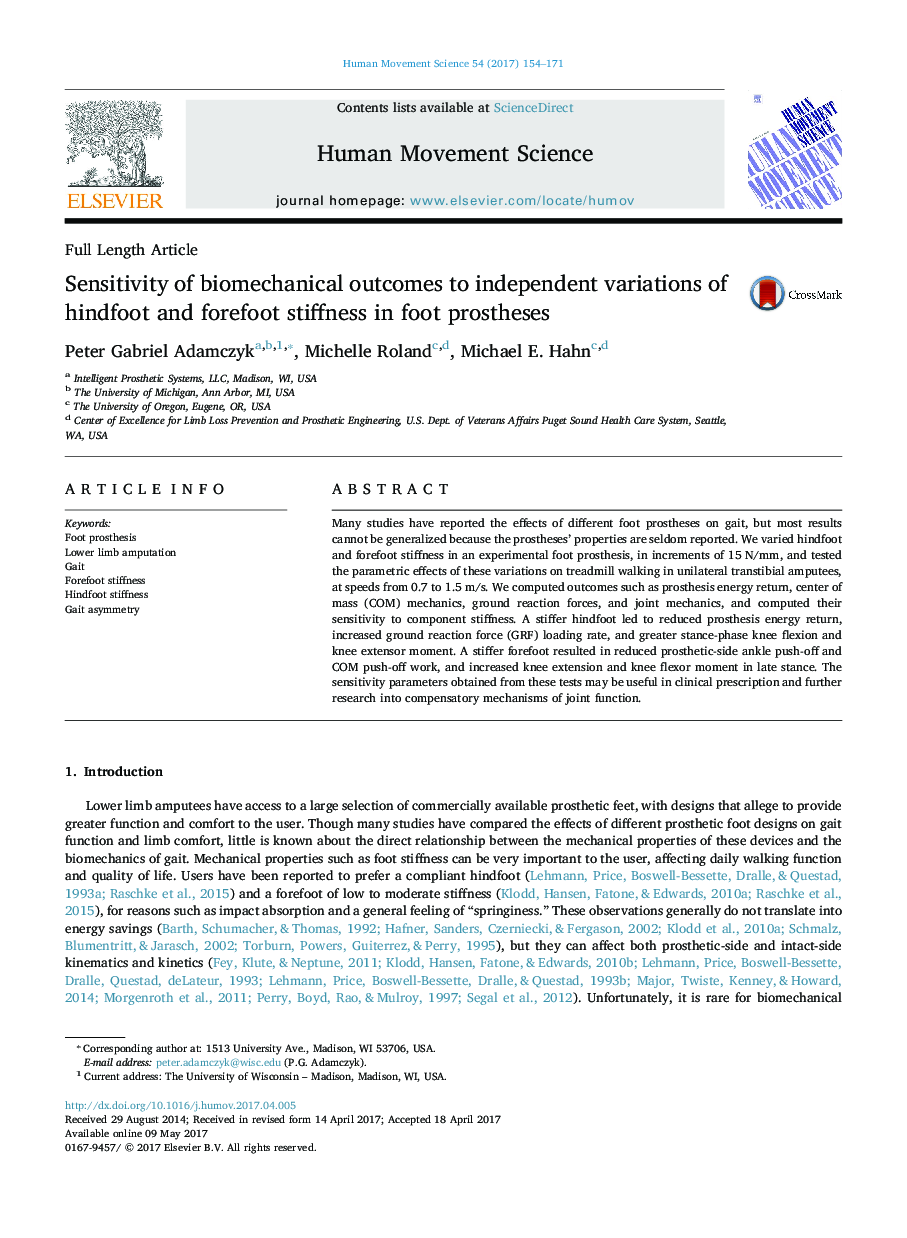| Article ID | Journal | Published Year | Pages | File Type |
|---|---|---|---|---|
| 5041975 | Human Movement Science | 2017 | 18 Pages |
Many studies have reported the effects of different foot prostheses on gait, but most results cannot be generalized because the prostheses' properties are seldom reported. We varied hindfoot and forefoot stiffness in an experimental foot prosthesis, in increments of 15Â N/mm, and tested the parametric effects of these variations on treadmill walking in unilateral transtibial amputees, at speeds from 0.7 to 1.5Â m/s. We computed outcomes such as prosthesis energy return, center of mass (COM) mechanics, ground reaction forces, and joint mechanics, and computed their sensitivity to component stiffness. A stiffer hindfoot led to reduced prosthesis energy return, increased ground reaction force (GRF) loading rate, and greater stance-phase knee flexion and knee extensor moment. A stiffer forefoot resulted in reduced prosthetic-side ankle push-off and COM push-off work, and increased knee extension and knee flexor moment in late stance. The sensitivity parameters obtained from these tests may be useful in clinical prescription and further research into compensatory mechanisms of joint function.
Graphical abstractDownload high-res image (221KB)Download full-size image
